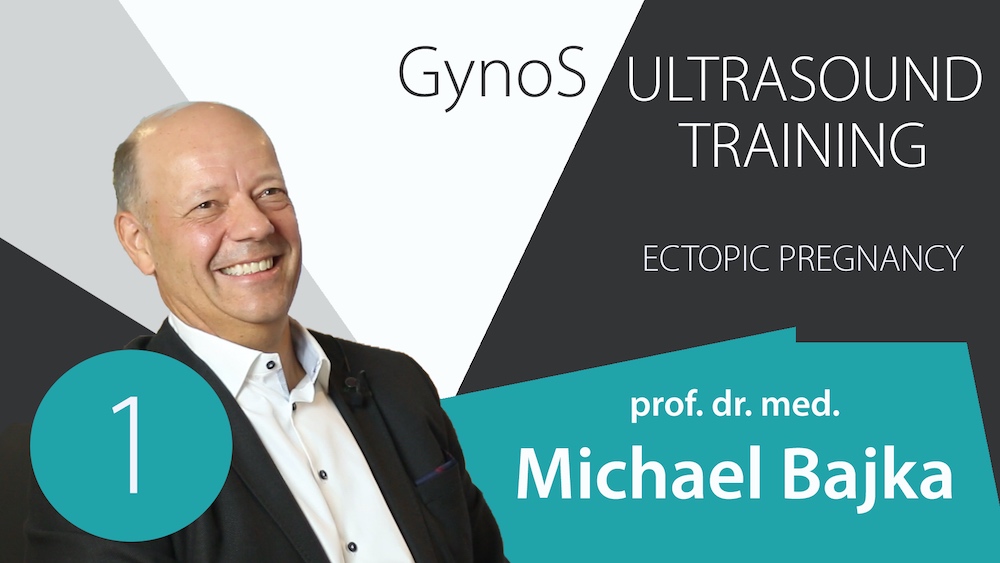VirtaMed Launches Ectopic Pregnancy Clinical Simulation Video Series
Ectopic pregnancies are rarely encountered during medical training; however, they still occur at a rate of around 100,000 per year across the United States, according to the Centers for Disease Control and Prevention. To help spread awareness about this condition and help educate learners on how to prepare and care for an ectopic pregnancy patient, VirtaMed has coordinated an informational video series on the subject. During the series, Professor Michael Bajka shares his knowledge about the diagnosis of an ectopic pregnancy, to better inform healthcare professionals and increase patient safety outcomes.
To identify an ectopic pregnancy, also called an extrauterine pregnancy, a learner must understand that the condition occurs when a fertilized egg implants and grows outside the main cavity of the uterus. An ectopic pregnancy most often occurs in a fallopian tube, which carries eggs from the ovaries to the uterus. According to VirtaMed, a challenge across the healthcare industry is that in situations where a junior doctor suspects an ectopic pregnancy, they then refer to a consultant to take over. This practice leads to junior doctors being unable to fully acquire the time and training necessary to diagnose the ectopic pregnancy themselves. To increase their confidence and competence, healthcare simulation training can be used to practice these scenarios.
The Accreditation Council for Graduate Medical Education (ACGME), American Board of Obstetrics and Gynecology (ABOG), and American College of Obstetrics and Gynecology (ACOG) jointly published obstetrics and gynecology residency milestones to include knowledge of ectopic pregnancies and obstetric technical skills for ultrasound assessment. These elements have been included in the VirtaMed GynoS Obstetric Ultrasound simulator.
Sponsored Content:
During VirtaMed’s ectopic pregnancy video series, Prof. Bajka explains rule No. 1 when identifying an ectopic pregnancy: Eliminate the possibility of an intrauterine pregnancy (occurring in the uterus). In this very rare training case, trainees are exposed to a heterotopic pregnancy, which is the existence of two simultaneous pregnancies with separate implantation sites, one of which is a viable intrauterine pregnancy and the other of which is a nonviable ectopic pregnancy.
Using the unique sensation of the female anatomy that is included with the VirtaMed GynoS, Prof. Bajka then guides learners through a transvaginal diagnosis, inserting the probe past the uterus to examine the fallopian tubes. Using the simulated ultrasound controls, he guides them toward being able to identify the beating heart of the viable pregnancy.
Sponsored Content:
For example, Prof. Bajka started one case examining “Akira,” a mother of two who is pregnant for a third time. The training scenario defines the gestational age as being six weeks and three days. She is complaining of certain tenderness in her stomach. The trainees then begin their simulated transvaginal ultrasound examination to find the fertilized egg, moving the probe from left to right for a complete overview. After completing the exercise, the learners discuss their findings and assess what to do next.
Lecture topics regarding ectopic pregnancy throughout this video series include using VR simulation training; learning practical skills and teaching; practicing with realistic cases; and being able to identify appearances as they relate to this condition. Another topic of interest discussed is ectopic pregnancy free fluid. Watch the full video series here.
About Michael Bajka, M.D.
Since 1995, Michael Bajka has focused on simulator development in the field of obstetrics and gynecology, while passionately pursuing a career as a clinical practitioner. He is involved in basic research, prototyping, validation, integration into the curriculum of OB-GYN, and assessment of future surgeons. He established national and international contacts between medical experts of different specialties, leading to the creation of a broad network of experts in all aspects of surgical simulation. His inspiration to define new innovative tasks and interventions for simulation, in combination with his long-term experience in collaborating with engineers, make him an optimal clinical partner for the startup company.
More About VirtaMed
VirtaMed is the world leader in medical training using mixed-reality simulators for minimally-invasive diagnostic and therapeutic interventions in obstetrics and gynecology. VirtaMed simulators provide the most realistic training environment, combining photorealistic graphics with original instruments and anatomically-correct rubber models. VirtaMed GynoS offers training for transvaginal and transabdominal obstetric and gynecological ultrasound, including the ISUOG standardized scanning protocols. Also featuring ultrasound guidance, embryo transfer simulation was developed exclusively with the American Society for Reproductive Medicine.
Hysteroscopy training includes multiple polyps, intramural fibroids, and uterine adhesions. Gynecological laparoscopy includes condensed training for transferable skills used in hysterectomy, oophorectomy and ectopic pregnancies. Clinicians around the world use the VirtaMed GynoS to learn in a risk-free training environment, and VirtaMed has partnered with medical associations to develop standardized simulation courses using performance-based proficiency assessments. Medical device and life science companies work with VirtaMed to develop and deliver professional education specific to their instruments.
Learn More About VirtaMed
Lance Baily, BA, EMT-B, is the Founder / CEO of HealthySimulation.com, which he started in 2010 while serving as the Director of the Nevada System of Higher Education’s Clinical Simulation Center of Las Vegas. Lance also founded SimGHOSTS.org, the world’s only non-profit organization dedicated to supporting professionals operating healthcare simulation technologies. His co-edited Book: “Comprehensive Healthcare Simulation: Operations, Technology, and Innovative Practice” is cited as a key source for professional certification in the industry. Lance’s background also includes serving as a Simulation Technology Specialist for the LA Community College District, EMS fire fighting, Hollywood movie production, rescue diving, and global travel. He and his wife live with their two brilliant daughters and one crazy dachshund in Las Vegas, Nevada.
Sponsored Content:






















